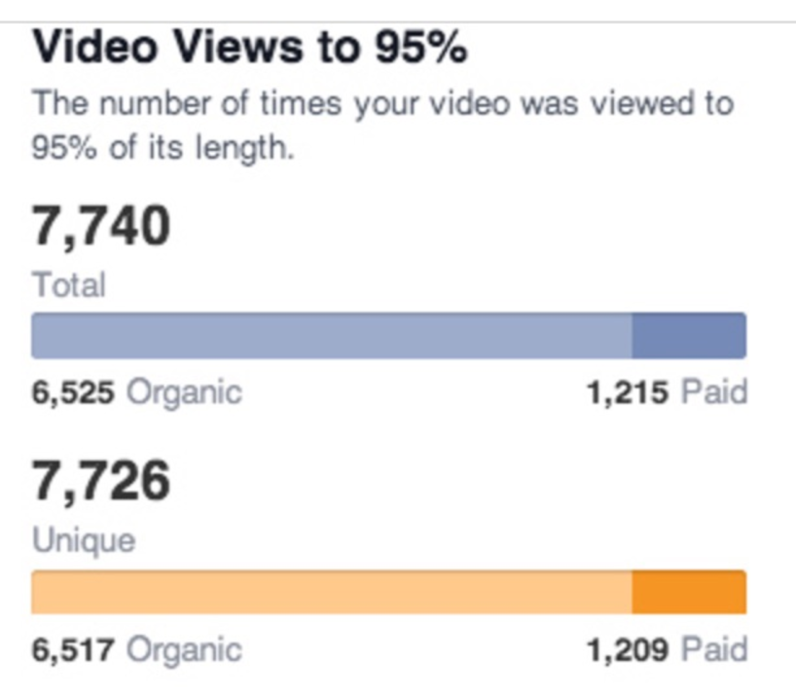The only positive thing in Facebook’s recent multiple restatements of its video metrics methodology is that most people were more focused on its other major issue: fake news.
But in the marketing industry, specifically the subset that deals with videos, the controversy brought to the fore a stark reality: no two video views are alike.
The explosion of online video, both through advertisements and short-form branded content, has given corporations ample opportunity to reach stakeholders through the moving image. But with that ubiquity comes many different formats and terms like autoplay, preroll, outstream, and others, each coming with different criteria.
Different platforms mean different challenges.
“We talk about metrics all of the time here,” says Devra Prywes, VP marketing and insight at Unruly. “Brands and agencies will come in and ask ‘What should we be measuring?’ You can measure so many things now. You need to be really clear on what your goals are.”
“There’s a lot of conversation with advertisers with what should they look at,” says Yoav Naveh, VP video at Taboola. “What is a view? What is a view by format? These conversations will keep happening.”
For all advertisers, Prywes says the most important thing is to go in with a good understanding of what you’re buying.
Taboola bought Naveh’s startup ConvertMedia in July.
The two biggest questions in video marketing have been simply – what determines whether a user saw a video and how long does he or she have to watch it to make it a valuable “view.”
“There are metrics that should have no debate: no fraud and [obvious] viewability,” Naveh says. Most experts say viewability should mean the entire video is within the screen, though some providers have different terms.
What constitutes a view, on the other hand, is still a debatable topic.
Facebook had long decided that a video view would begin after three seconds, since the video was autoplay and users could be slowly scrolling through their feed with no intention of watching the video that began playing immediately.
Advertisers were upset when they found out that those less-than-three-second views were not counting in its average video view time, effectively inflating that number.
While Facebook released a clarification (actually two) around its metrics, the conversation continued. Does Facebook continue its own approach, or will this be the opportunity to force Facebook into metrics standards used elsewhere.
Naveh says there must be some sort of baseline, mentioning that the IAB states it must be played for two seconds.
“Anything below that is obviously not a view,” Naveh says.
Naveh adds that while there is a standard, that shouldn’t be the end of the conversation.
[The IAB’s] original intent was a starting point and the idea was focusing of viewability, but that’s the bare minimum,” Naveh says.Oded Napchi, CMO, HIRO Media, says via email that a preroll ad view should be “more than 50% of the ad placement and more than 50% of its duration.”
“Part of the confusion is that there is there are so many definitions,” Prywes says. “A lot of people are using the same words differently, so all parties need to be very clear about what they’re defining things to mean.”
Facebook can be a major culprit here as they command so much of the advertising budget, yet they are cagey about third-party analytics.
“Video views are not all created equal,” says Jay Prasad, Chief Business Officer at VideoAmp, via email. “Platforms can create the value of their views, but it should be measured by a third party to avoid conflicts of interest and to normalize value across platforms.”
No two views are alike. Context is a crucial and difficult-to-determine metric, experts say
“All metrics are good metrics, but there is one important metric that is missing in our market, and that is the content environment/context,” HIRO’s Napchi says. “Our market is focused on the audience but what’s often left out is the content environment. Your ad will receive a different perception whether it will be presented in CNN or in a fake news site claiming, for example that Hillary Clinton is selling guns to ISIS.”
Naveh points out the sheer number of variables that impact the environment and user function of an article make universal standards incredibly difficult.
For instance, videos in the middle of an article on a premium publisher, Naveh asks:
“How do you know that completions are the most important metrics if people are reading around it?”
Prywes believes there will always be different metrics for different products. Also, she believes different metrics should matter depending on the type of campaign.
“It comes down to the marketers being critical and asking the right questions,” Prywes says, by understanding the “methodology behind the metrics.”








